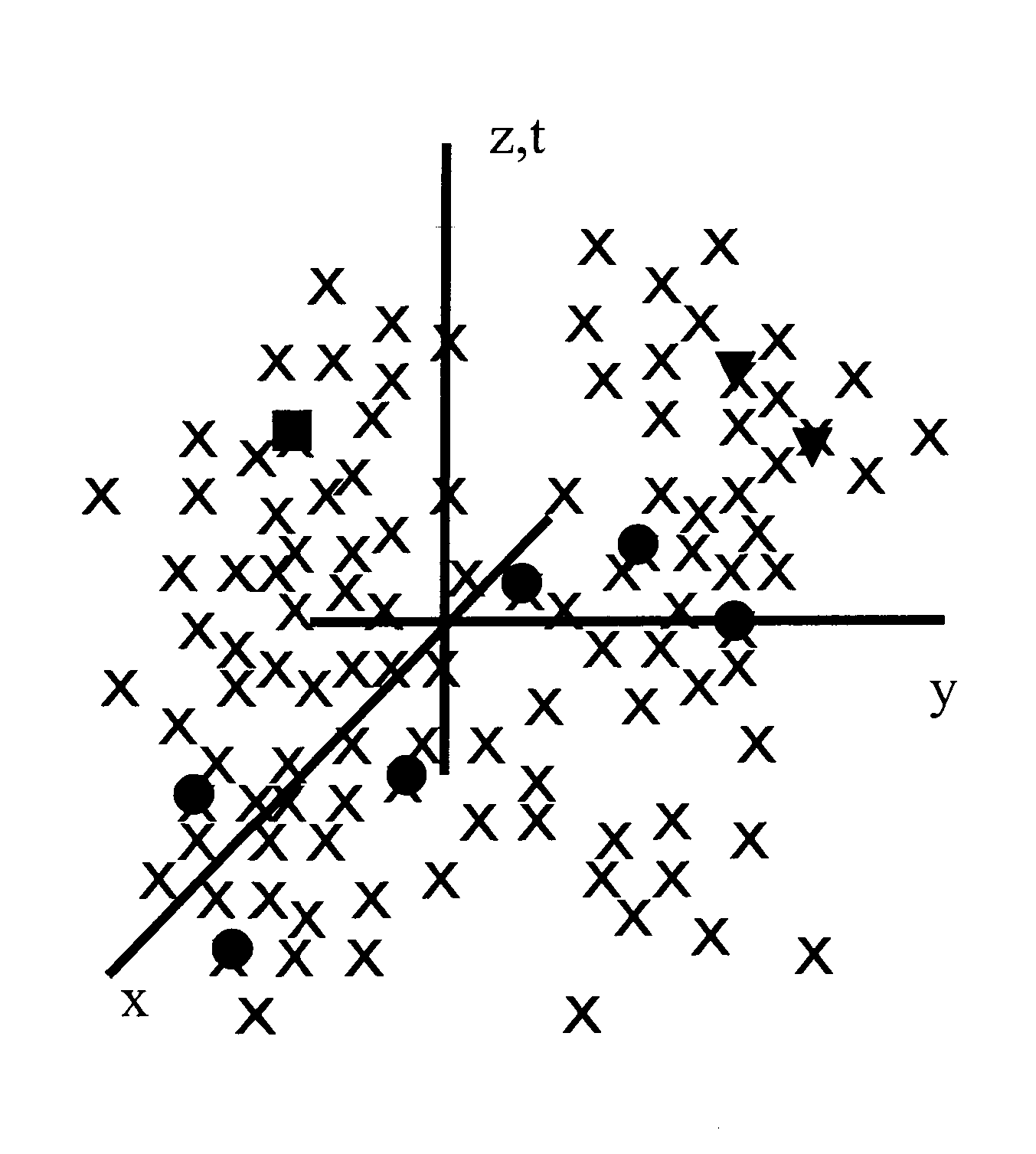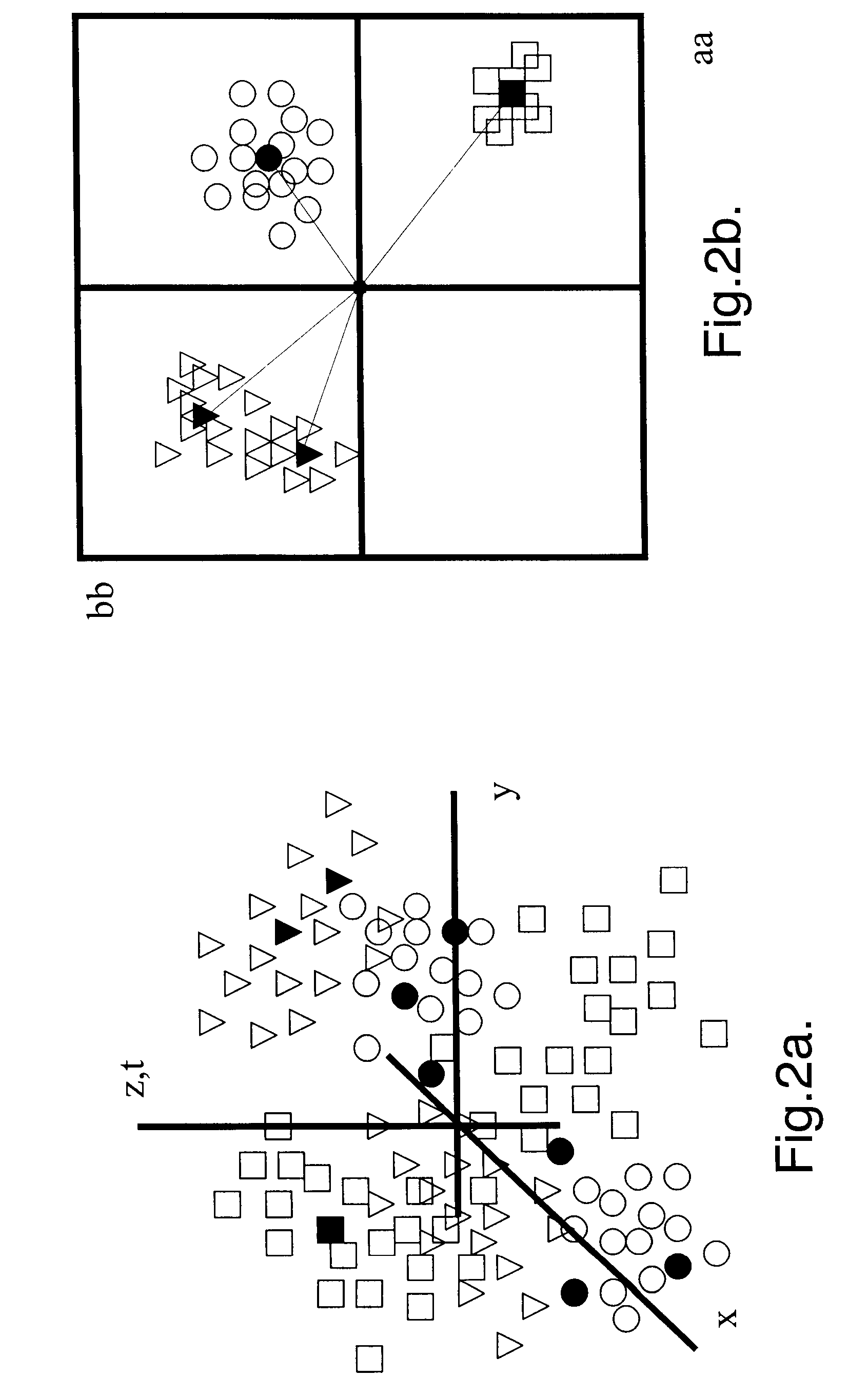Interpreting a plurality of M-dimensional attribute vectors assigned to a plurality of locations in an N-dimensional interpretation space
a plurality of attribute vectors and n-dimensional interpretation space technology, applied in the field of interpreting a plurality of m-dimensional attribute vectors, can solve the problems of insufficient polygon method, operator's inability to confidently draw polygons to distinguish among several classes of data, and large amount of data obtained for interpretation spa
- Summary
- Abstract
- Description
- Claims
- Application Information
AI Technical Summary
Benefits of technology
Problems solved by technology
Method used
Image
Examples
Embodiment Construction
[0057]Reference is made to FIGS. 1a and 1b. FIG. 1a shows a 3-dimensional interpretation space, and for the purpose of illustration it will be assumed that it is a space in the earth's subsurface. So the three axes relate to co-ordinates x,y,z (spatial), or x,y,t, since the “vertical” dimension is frequently displayed in units of seismic travel time. The interpretation space can be any n-dimensional volume of a physical space. The interpretation space could also have for example two or one dimension(s), if data are obtained only in less than three dimensions such as in a plane or along a trajectory such as a wellbore.
[0058]For a large number of locations P in the interpretation space, where a cross is indicated in FIG. 1a, data are available or obtained, perhaps even continuously throughout the space. For the method of the invention, at least two data sets are considered, which can for example originate from different measurements, or from different parameters derived via processing...
PUM
 Login to View More
Login to View More Abstract
Description
Claims
Application Information
 Login to View More
Login to View More - R&D
- Intellectual Property
- Life Sciences
- Materials
- Tech Scout
- Unparalleled Data Quality
- Higher Quality Content
- 60% Fewer Hallucinations
Browse by: Latest US Patents, China's latest patents, Technical Efficacy Thesaurus, Application Domain, Technology Topic, Popular Technical Reports.
© 2025 PatSnap. All rights reserved.Legal|Privacy policy|Modern Slavery Act Transparency Statement|Sitemap|About US| Contact US: help@patsnap.com



